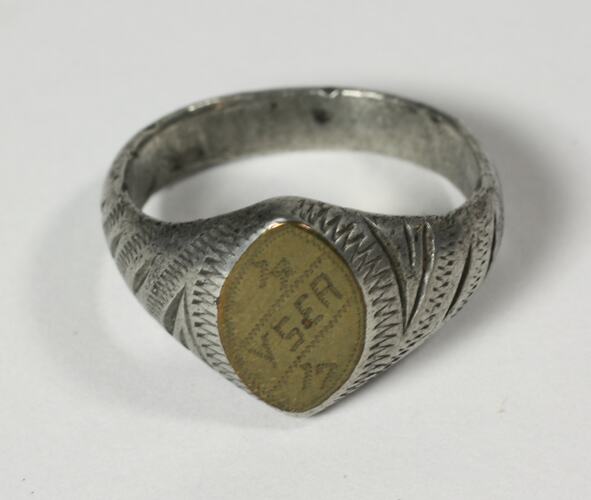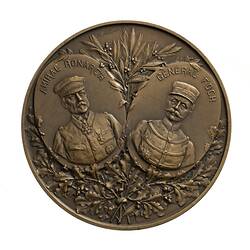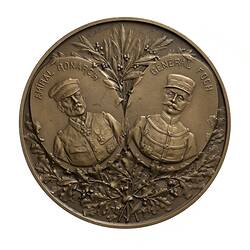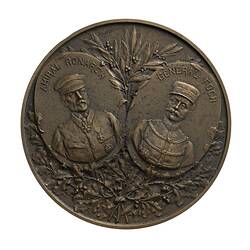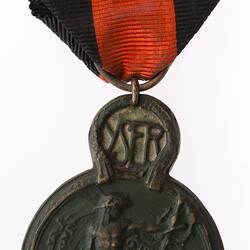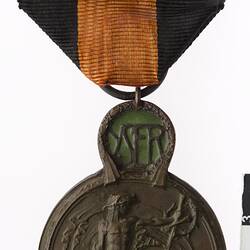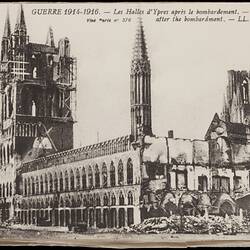Summary
Metal ring with yellow metal face. Souvenir of Yser, inscribed '14/17', referring to World War I battles that took place there in 1914 and 1917.
The Yser is a river that flows from the north of France into Belgium and out to the sea at Nieuwpoort. In October 1914, the Germans systematically attacked allied forces in Battle of the Yser, attempting to reach the coast and control critical ports. The attacks were ultimately unsuccessful, with the Belgians opening sea defences and flooding the area between Diksmuide and Nieuwpoort. The Battle of the Yser contributed to the establishment of the Western Front.
In July 1917 the Germans launched Operation Strandfest, a pre-emptive strike to destroy the Yser bridgehead. The allies had been reinforcing defences, including tunnelling by the 257th and the 2nd Australian Tunnelling Companies, but their work was incomplete when the attack began. Most of the Yser River bridges were destroyed, mustard gas and flame-throwers were deployed, and the British suffered over 3,000 casualties. A German attack to the east was less successful, and most of the German advance was eventually repelled.
Physical Description
Metal with decorative engraving and shield-shaped face in yellow-coloured metal.
More Information
-
Collecting Areas
-
Acquisition Information
Donation from Unknown, Victorian Branch, Returned & Services League of Australia Limited (RSL)
-
Date Inscribed
-
Inscriptions
'YSER', '14/17'
-
Classification
-
Category
-
Discipline
-
Type of item
-
overall dimensions
25 mm (Width), 23 mm (Depth), 15 mm (Height)
Not round; minimum diameter 23mm, maximum 25 mm
-
References
Information about the Battle of the Yser: Robert Dunlop, 'Operation Hush: planned landing on Belgian coast', [Link 1] 'Battle of the Yser', Wikipedia, accessed 24/8/2011.
-
Keywords
